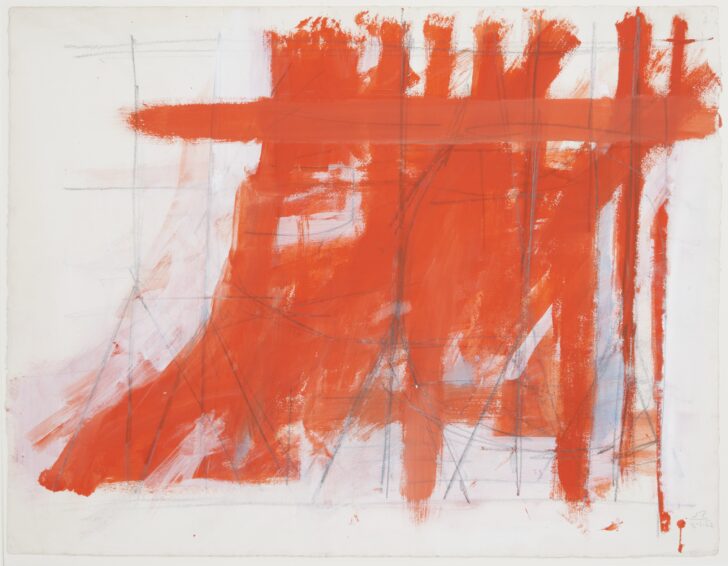Large Red
Jack Tworkov

Description
Born in Biala, Poland, in 1900, Jack Tworkov came to the United States at the age of thirteen. After studies at Columbia University, the National Academy of Design, and the Art Students League, Tworkov worked during the Depression first with the Public Works of Art Project and then with the WPA. While with the WPA, Tworkov met Willem de Kooning, who was also working for the program, and the two became part of the founding generation of New York School artists.
Tworkov's early figures, landscapes, and still lifes demonstrate the influence of the progressive nineteenth-century artist Paul Cézanne (1839–1906). Tworkov's experiments with Cubism led gradually to gestural abstraction. A major influence for Tworkov was the Surrealists' notion of automatic creation (tapping the unconscious and placing images onto paper or canvas without the interference of the conscious mind). During the 1950s, Tworkov's previously recognizable subjects gradually become subsumed by his expressive brushstrokes.
Large Red of 1962 is a perfect example of one of Tworkov's automatic creations, full of energy and vitality. Despite the feeling of randomness, there exists in each of his works an underlying sense of order. Even and regular strokes are readily apparent, and although the surface is restless, it remains controlled and restrained.
Sean M. Ulmer, University Curator of Modern and Contemporary Art, on the occasion of the exhibition The New York School: Abstract Expressionism and Beyond, July 20, 2002 – January 19, 2003
Usage Rights:
If you are interested in using an image for a publication, please visit https://umma.umich.edu/request-image/ for more information and to fill out the online Image Rights and Reproductions Request Form.